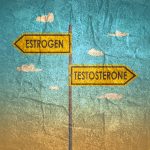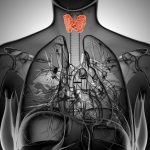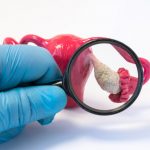Environmental Hormone Disruption
Restoring the Endocrine and Neurological System Damaged by Toxins
Heather Wdowin, NMD
We are concerned about the environment, and we are concerned about the lives of our people and you must realize that the Haudenosaunee and the indigenous peoples of the world live by the natural laws. The natural laws are very simple, but the natural laws of the world cannot be violated without consequence. We are realizing the consequences to the violation of these laws as we look around us. Norm Jacobs spoke of the trees dying from the tops down. We heard about our streams of water in the mountains where the fish do not live anymore. We know that animals that used to be here a long time ago do not exist anymore. And this is because the laws of nature have been violated. And the consequence that comes in non-existence.
-Chief Irving Powless Jr1
The year 2012 has been associated with dire prophesies. I am reminded of my 18th birthday, which I spent at the UN Summit of the Elders, when a confederacy of Native peoples asked the United Nations to help empower them with the authority to protect the Earth from the ravages of rampant polluting. They spoke of different prophesies, but the one that has stayed with me is that if change is not made when the trees start dying from the top down, and when fish no longer live in the streams, then there are only 7 more generations of humans until the end of mankind. With an adolescent dramatic flair, I started taking pictures of trees, animals, and the blue sky, to remind me in my old age of what nature looked like in my youth, and I pondered. In 7 generations, will humans be rendered infertile from all the pollutants disrupting our endocrinology? Will our bodies no longer be fertile, healthy soil in which to grow thriving babies?
In 2005, the Environmental Working Group2 tested umbilical cord blood from 10 children and found 287 chemicals: 180 of them were carcinogenic, 217 were neurotoxic, and 208 caused birth defects or abnormal development in animal tests. To date, the dangers of prenatal or postnatal exposure to this complex mixture of carcinogens, developmental toxins, and neurotoxins have not been studied.
In October 2011, The Endocrine Disruption Exchange3 documented that 870 separate toxic compounds have endocrine disruptive effects. Endocrine disruptors are defined as toxic compounds that can modulate the endocrine and immune systems, resulting in alteration of homeostasis, reproduction, development, and behavior.4 These chemicals can affect the endocrine and reproductive systems in 4 major ways: by mimicking or antagonizing the effect of endogenous hormones and by disrupting the synthesis and metabolism of endogenous hormones or their receptors.5
The Environmental Protection Agency states the following in their Chemical Hazard Data Availability Study:
[O]f the 3,000 chemicals that the US imports or produces at more than 1 million lbs/yr, a new EPA analysis finds that 43% of these high production volume chemicals have no testing data on basic toxicity and only seven percent have a full set of basic test data. This lack of test data compromises the public’s right to know about the chemicals that are found in their environment, their homes, their workplace, and the products that they buy. Industry must do more to ensure that basic information is available on every high-production chemical they manufacture.6
Basic testing for toxic effects does not necessarily include endocrine effects; however, under California’s Proposition 65 the governor must create a list of known carcinogens and reproductive toxicants.7 We are inundated with warning signs almost everywhere we go about materials in restaurants, in yards where pesticides are used, and in foods, warning us of possible cancers and reproductive effects from being exposed to these more than 800 substances. It has become clear that we are marinating in a toxic rémoulade.
Commonly Known Environmental Hormone Disruptors
In 2000, an independent panel of experts convened by the National Institute of
Environmental Health Sciences and the National Toxicology Program found there was credible evidence that some hormone-like chemicals at very low levels can affect animals’ bodily functions.8 Chemicals that are known endocrine disruptors include dioxin and dioxin-like compounds, polychlorinated biphenyls (PCBs), dichlorodiphenyltrichloroethane (DDT), bisphenol A (BPA), di(2-ethylhexyl) phthalate (DEHP), and even some natural compounds found in soy.8
Dioxin
After decades of unbridled pollution, dioxin can be found everywhere, but the highest amounts are in soil and sequestered in animal fat.9 As by-products of paper and pesticide processing and when plastics are burned, dioxins are considered the most toxic chemicals thathumans produce because they are known to cause cancer, miscarriage, and birth defects.10
PCBs and DDT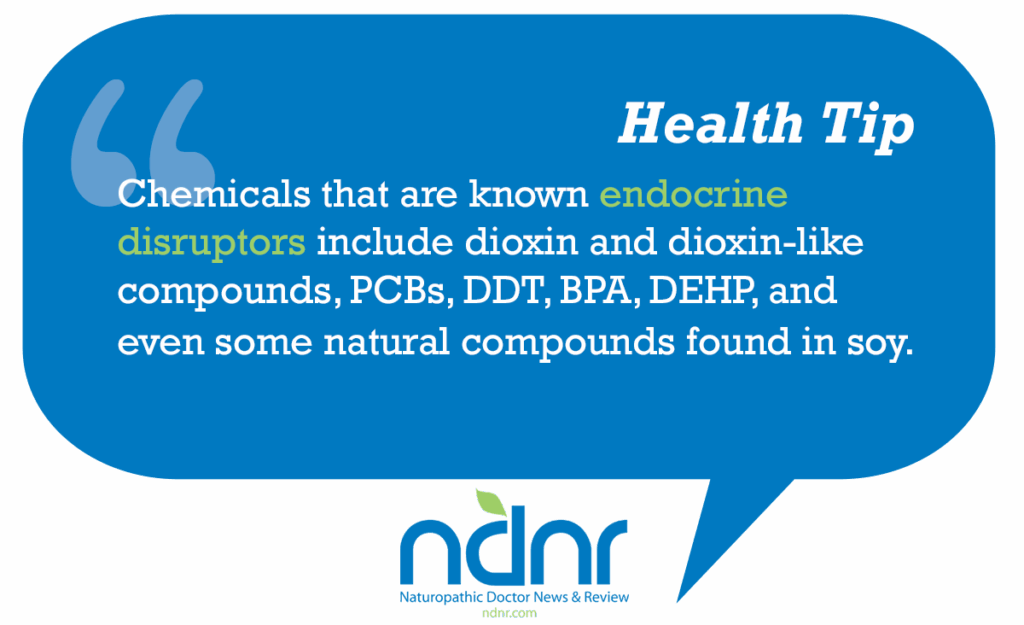
Despite their being outlawed, PCBs and DDT are still found in our food supply and in adipose tissue samples.11 Farmed Atlantic salmon and butter have high levels of PCBs, and we are exposed to DDT because it is manufactured in the United States and exported to other countries, where it is used on produce that is then imported for American consumption.10
Plastic Additives
The nastiest and most famous DEHP and BPA are plastic additives, which have been related to obesity in humans.12,13 While they are well-documented endocrine disruptors in animals and are getting a lot of scientific attention, human studies are sparse. We are beginning to see scientific evidence of a correlation with metabolites,14 decreasing semen quality and androgen levels in men, as well as a possible connection to aromatase activity.15 Phthalates are found in myriad plastic products, including food and beverage items and some medical products, as well as cosmetics, pesticide carriers, soaps and detergents, inks, lacquers, lubricating oils, adhesives, photographic film, wire and cable, toys, toothbrushes, and defoaming agents.16 Data show that exposure to BPA, a synthetic estrogen found in polycarbonate plastics and linings of beverage and food containers, may have effects on the growing “diabesity” epidemic, and a recent human study17 links BPA exposure with altered expression of estrogen-responsive and androgen-responsive genes in humans. In another study,18 after 3 days of eating food that had not come into contact with plastic, people’s urinary levels of BPA dropped by 66% and levels of DEHP by 53% to 56%. Unfortunately, these chemicals are stored in fat tissue19 rather than being quickly and effectively eliminated from the body, as the plastic companies would like you to think.
Mercury
Mercury significantly affects the nervous system, but it can also be an endocrine disruptor.20 Mercury, lead, and cadmium have been shown to stimulate estrogen receptors and to alter hormone levels in healthy, regularly menstruating women.21 Environmental estrogens can also be inorganic; such xenoestrogens have been termed metalloestrogens and can include aluminum, antimony, arsenite, barium, cadmium, chromium, cobalt, copper, lead, mercury, nickel, selenite, tin, and vanadate.22 Arsenic in high amounts caused infertility in Mexicans who had elevated amounts in their well water.23 Breast cancer risk is higher for women born after 1940, and the recent climb in breast cancer rates cannot be solely explained by genetics; therefore, we must suspect estrogenic chemicals, metalloestrogens, and toxins that have estrogenic effects because total estrogen exposure is the most important risk factor for breast cancer.20
Here is a fact that hammers home the importance of teaching your patients to read ingredients labels and to stop drinking soda: “Mercury contamination of food products as a result of the use of mercury contaminated HFCS (High Fructose Corn Syrup) seems like a very real possibility. With daily per capita consumption of HFCS in the US averaging about 50 grams and daily mercury intakes from HFCS ranging up to 28 μg, this potential source of mercury may exceed other major sources of mercury especially in high-end consumers of beverages sweetened with HFCS.”24
Polyaromatic Hydrocarbons
Polyaromatic hydrocarbons have been shown to have estrogenic or antiestrogenic effects.25 Other investigators concluded that certain polyaromatic hydrocarbons can cause proliferation of thyroid cancer cells26 and alter thyrotropin levels.27
Organochlorine Pesticides
Organochlorine pesticides directly regulate gonadotropin-releasing hormone gene expression and biosynthesis.28 They alter hormone production at the hypothalamic level, perhaps by disrupting the neurons themselves.28
Organophosphorus Pesticides
Organophosphorus pesticides affect follicle-stimulating hormone and luteinizing hormone levels.29 The mechanism is by disrupting the hypothalamic pituitary endocrine function.29
Organotins
Organotins, for example tributyltin chloride, are “widespread, persistent organic pollutants with potent endocrine-disrupting properties…as they act as agonist ligands for nuclear receptors that play pivotal roles in lipid homeostasis and adipogenesis.”30(ps50) The environmental obesogen hypothesis predicts that inappropriate receptor activation by organotins will lead directly to adipocyte differentiation and a predisposition to obesity or will sensitize exposed individuals to obesity and related metabolic disorders under the influence of the typical high-calorie, high-fat Western diet. These compounds have been found in human tissue samples, including blood, milk, and liver.31 Tributyltin chloride is still used commercially, and it pollutes many waterways and contaminates seafood.32 Obesity is strongly linked with exposure to risk factors during fetal and infant development.33 The greater frequency that infants and children are exposed to these toxins, the more likely they are to be obese in the future. Increasing fat cells adds gasoline to the fire of dysfunction because adipocytes have roles in endocrine function, from secreting leptin to being major sites of metabolism of sex hormones and glucocorticoids.34 In addition, they contain aromatase, which shunts testosterone and estrogen and can in part explain why obese men appear feminized and obese women display hirsutism and polycystic ovary syndrome with elevated androgen levels. Some obesogens have been epidemiologically studied, and correlations have been seen between obesity and levels of organotins in blood.35 Chemical pesticides, particularly atrazine and dichlorodiphenyldichloroethylene, are also obesogens and have been linked to an increased body mass index in children.36 More than half of American women are obese,37 and obesity is linked to infertility.38
Dr Bill Mitchell stressed to his students: “We are biochemically responsible for every chemical that enters our body [pause]. We are biochemically responsible for every chemical that enters our body.”39 The reductionist scientific and medical communities may take another 2 generations to determine exactly where the malfunction and toxic effects occur for each specific toxin and at what levels. While I am all for the advancement of science, I do not want to wait that long to remove the toxins from my body for my own health, as well as to prevent vertical transmission to my children. Evidence recently emerged that endocrine disrupting chemicals “have adverse effects on animals and humans in the range of environmental exposures,”40 indicating that even low doses cannot be ignored. The same study40 recommends fundamental changes in chemical testing and safety determination to protect human health.
The Therapeutic Order
Therapeutic order instructs us to first remove the cause of disease, and it is more important than ever in this modern age of myriad mystery chemicals because the environment is clouding our patients’ health pictures significantly. A seemingly insurmountable obstacle to cure is created. It is perhaps most alarming that these toxins have significant detrimental effects on the 2 systems that manage all our processes and maintain homeostasis (the endocrine and neurological systems), as well as the immune system, which is responsible for protecting us from foreign threats. Toxicity is akin to biological terrorism on our bodies, on our temples.
Remove the Obstacles to Health
Twenty-five percent of detoxification occurs in intestinal lining cells, where chemicals and other dietary toxins and contaminants are rendered harmless and excreted or are reabsorbed and hitch a ride to the liver, where they are disarmed by phase 2 and excreted. Phase 1 is performed by the 50 to 100 different enzymes that make up the cytochrome P450 system, which can directly neutralize unwanted chemical compounds but more often produces intermediate forms that are more reactive, which need to then be altered by phase 2 as quickly as possible so they cannot run amok and cause more damage than the original substance. Phase 1 is upregulated by many common substances, including alcohol, nicotine, charbroiled meats, dioxin, pesticides, carbon tetrachloride, and many chemical fumes. Glutathione is integral to phase 1, and necessary nutrients include copper, magnesium, zinc, vitamin C, folic acid, flavonoids, and vitamins B2, B3, B6, and B12.41 While we do want phase 1 to act quickly to jump-start removing the chemicals, phase 2 can often run slowly, with a backup in the pipeline causing more damage. Nutrients needed for optimal phase 2 conjugations include glutathione, cysteine, methionine, taurine, glycine, choline, folic acid, selenium, zinc, molybdenum, and vitamins B2, B5, B12, and C. On a side note, aspirin and other nonsteroidal anti-inflammatory drugs cause phase 2 inhibition,41 which makes me further question the wisdom of taking low-dose aspirin as America’s most popular disease prevention strategy.
Open Up the Emunctories!
At our integrative medical center, we have an infrared sauna and a dry sauna to facilitate people’s sweating and to open up the emunctories. We often predose our patients with tinctures of Achillea to support diaphoresis and Trifolium and Arctium for their alterative actions to increase waste removal from blood and lymph.42
In my opinion, colon hydrotherapy is an integral aspect of detoxification, not only because it is hydrating and helps protect the kidneys during detoxification but also because I have clinically seen it help normalize bowel habits and decrease bowel transit time. Americans are plagued by constipation. When multigrain breakfast cereals advertise that they decrease cholesterol levels, presumably because of their fiber content, one must question the amount of fiber in the American diet and hypothesize about the epidemic chronic constipation. Constipation is dangerous because it allows wastes to remain longer on highly absorbable tissues. One of the perhaps lesser-known effects of estrogen is that it slows bowel motility43 and may increase reabsorption of toxins en route to being eliminated. Colon hydrotherapy may be a tough sell at first, but the sessions dramatically reduce toxic burden fast. Detoxification expert Dr Walter Crinnion recommends that patients start with twice-weekly sessions for 2 weeks, and the patient is able to see the difference colon hydrotherapy makes. The sessions can then be decreased as indicated, but he finds that only once a week at first will just keep the toxic levels stable rather than significantly decreasing them.10 While it has been said that frequent colonics can disturb microflora and decrease electrolytes or minerals in the body, that is not actually observed, and most people without contraindications tolerate colon hydrotherapy well, with no deleterious effects.
Chelation
Because heavy metals are tenacious and are not removed from the body easily, I recommend chelation for most people living in the modern world but especially for those with chronic disease. Perhaps most important, mothers wanting to have a healthy child, born unhampered by starting out life in an already toxic environment with a high-toxic body burden, should undergo chelation before conception. However, chelation therapy should absolutely not be done without proper training; otherwise, it can cause more harm than good.
Stimulate the Vis
Constitutional hydrotherapy is my favorite old-school therapy to stimulate the vis. It helps people balance and awaken their regenerative, parasympathetic, and detoxifying processes.
Homeopathic remedies may be prescribed as indicated. However, it bears reflection that if mint toothpaste and coffee have the potential to counteract and antidote the effects of homeopathic medicines, one has to wonder how this therapy is affected with the rampant toxicity found in our environment.
Exercise
We have an exercise department at our medical center with a complete gym on the premises because exercise not only may help patients look good in their birthday suits but also mobilizes stored lipophilic toxins, increases circulation to muscles to flush them out, and gets people to sweat. Physical activity increases lipolysis, mobilization of toxins, blood flow, and hormone regulation: “Participating consistently in a progressive strength training exercise program can stimulate the pituitary gland and metabolism, reduce body fat, re-sensitize muscle tissue to glucose by insulin receptor density, reduce stress hormone levels, improve sleep and increase overall vitality.”44 Getting patients moving stimulates and strengthens them in more ways than merely cardiovascular and muscular ones.
Use Natural Substances to Restore and Regenerate
Natural substances should be used to restore and regenerate. Recommendations for supplements include the following:
To Strengthen Weakened Systems
To strengthen weakened systems, I recommend at least 60 drops a day of Vitex agnus-castus. This supplement normalizes pituitary function42 because it has an effect on luteinizing hormone, follicle-stimulating hormone, and prolactin secretion and is used for premenstrual syndrome, infertility, and normalization of menstrual cycles.45
Bowel transit time may be decreased with fiber and cholagogue herbs. A comprehensive detoxification support vitamin intravenous therapy recipe should include vitamin C, taurine, glutamine, glycine, magnesium, selenium, vitamin B complex, vitamin B5, vitamin B6, vitamin B12, molybdenum, zinc, and copper.
To Correct Structural Integrity
Other supplements can correct structural integrity. Heal the gut lining with aloe juice (one-quarter cup daily).42 Powdered glutamine, probiotics, and slippery elm can soothe and nourish the intestines and decrease gut inflammation and possibly toxin permeability.
Vitamin C, selenium, and proline help build tissue integrity. Essential fatty acids will strengthen and stabilize cell membranes and help resist peroxidation.
Embrace Patient Education
At heart, I am an old-school physician, believing in the healing power of nature and endeavoring to use the least invasive therapy to bring about results. Dr Jim Sensenig asked me once what I treated at my office, and I replied “the cause.” In these toxic times, however, I do not believe you can practice effective naturopathic medicine and treat the cause in anyone without recommending a comprehensive detoxification program and offering patient education about how to avoid further exposure. As I get closer to my planned fecundity, we have already started many of these therapies on myself, so that we may bring our children into this world as clean as possible. These children will hopefully then have a better chance at healthy bodies and minds and may make the positive changes for our environment, thereby helping to ensure that humanity does not have only 7 more generations. Physicians, heal thyselves.
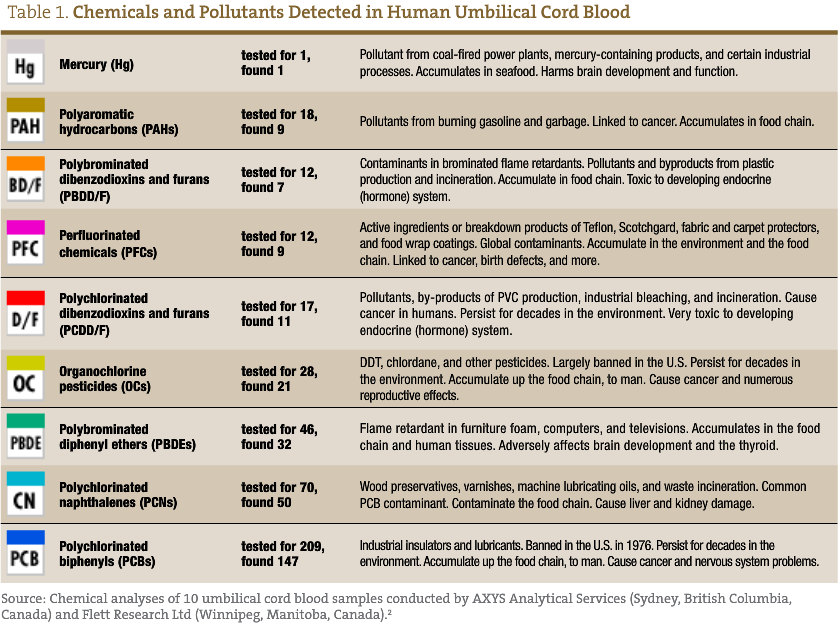
 Heather Wdowin, NMD is licensed to practice in Arizona and California. She graduated with a BS in neurobiology from Cornell University (Ithaca, New York), and her NMD degree is from Southwest College of Naturopathic Medicine & Health Sciences (Tempe, Arizona). She has circumnavigated the planet with a backpack, hiked the Grand Canyon 9 times, jumped out of an airplane, sailed down the Nile, and meditated in the Queen’s Chamber of the Great Pyramid. Dr Wdowin specializes in sports medicine, neuroendocrinology, and environmental medicine. As cofounder of Human Reconstruction, in Fair Oaks, California, she designed the space for detoxification therapy and treatment. She also currently teaches RN and MA students at The University of Phoenix (Sacramento Valley Campus, Sacramento, California) and at Heald College (Roseville, California).
Heather Wdowin, NMD is licensed to practice in Arizona and California. She graduated with a BS in neurobiology from Cornell University (Ithaca, New York), and her NMD degree is from Southwest College of Naturopathic Medicine & Health Sciences (Tempe, Arizona). She has circumnavigated the planet with a backpack, hiked the Grand Canyon 9 times, jumped out of an airplane, sailed down the Nile, and meditated in the Queen’s Chamber of the Great Pyramid. Dr Wdowin specializes in sports medicine, neuroendocrinology, and environmental medicine. As cofounder of Human Reconstruction, in Fair Oaks, California, she designed the space for detoxification therapy and treatment. She also currently teaches RN and MA students at The University of Phoenix (Sacramento Valley Campus, Sacramento, California) and at Heald College (Roseville, California).
References
Powless I Jr. Summit of the Elders: Haudenosaunee Environmental Restoration Strategy. New York, NY: United Nations; July 18, 1995. http://www.ratical.org/many_worlds/6Nations/EldersSummit.html. Accessed
June 17, 2012.
Environmental Working Group. Body burden: the pollution in newborns. July 14, 2005. http://www.ewg.org/reports/bodyburden2/execsumm.php. Accessed
April 29, 2012.
The Endocrine Disruptor Exchange (TEDX). TEDX list of potential endocrine disruptors. 2011. http://www.endocrinedisruption.com/endocrine.TEDXList.overview.php. Accessed April 29, 2012.
Amaral Mendes JJ. The endocrine disrupters: a major medical challenge. Food Chem Toxicol. 2002;40(6):
781-788.
Sonnenschein C, Soto AM. An updated review of environmental estrogen and androgen minics and antagonists. J Steroid Biochem Mol Biol. 1998;65(1-6):
143-150.
Environmental Protection Agency. HPV Chemical Hazard Data Availability Study. 1998. http://www.epa.gov/hpv/pubs/general/hazchem.htm. Accessed April 5, 2012.
Office of Environmental Health Hazard Assessment. Current Proposition 65 list. March 16, 2012. http://oehha.ca.gov/prop65/prop65_list/files/P65single
031612.pdf. Accessed May 4, 2012.
National Institute of Environmental Health Sciences. Endocrine disruptors. http://www.niehs.nih.gov/health/assets/docs_a_e/endocrine_disruptors.pdf. Accessed April 28, 2012.
World Health Organization. Dioxins and their effects on human health. May 2010. http://www.who.int/mediacentre/factsheets/fs225/en/. Accessed May 2012.
Crinnion W. Clean, Green and Lean. Hoboken, NJ: John Wiley & Sons Inc; 2010.
US Environmental Protection Agency. National Human Adipose Tissue Survey (NHATS). http://cfpub.epa.gov/ncea/cfm/recordisplay.cfm?deid=55204. Accessed July 2, 2012.
Stahlhut R, van Wijngaarden E, Dye TD, Cook S, Swan SH. Concentrations of urinary phthalate metabolites are associated with increased waist circumference and insulin resistance in adult U.S. males. Environ Health Perspect. 2007;115(6):876-882.
Heindel JJ. Endocrine disruptors and the obesity epidemic. Toxicol Sci. 2003;76(2):247-249.
Hauser R. Urinary phthalate metabolites and semen quality: a review of a potential biomarker of susceptibility. Int J Androl. 2007;31(2):112-117.
Meeker JD, Calafat AM, Hauser R. Urinary metabolites of di(2-ethylhexyl) phthalate are associated with decreased steroid hormone levels in adult men. J Androl. 2009;30(3):287-297.
US Environmental Protection Agency. Toxicity and Exposure Assessment for Children’s Health (TEACH). Phthalates: TEACH chemical summary. October 10, 2007. http://www.epa.gov/teach/chem_summ/phthalates_summary.pdf. Accessed May 4, 2012.
Meltzer D, Harries L, Cipelli R, et al. Bisphenol A exposure is associated with in vivo estrogenic gene expression in adults. Environ Health Perspect. 2011;119(12):1788-1793.
Rudel RA, Gray JM, Engel CL, et al. Food packaging and bisphenol A and bis(2-ethyhexyl) phthalate exposure: findings from a dietary intervention. Environ Health Perspect. 2011;119(7):914-920.
Stahlhut RW, Welshons WV, Swan SH. Bisphenol A data in NHANES suggest longer than expected half-life, substantial nonfood exposure, or both. Environ Health Perspect. 2009;117(5):784-789.
Wdowin G. Breast cancer and environmental toxins [printed informational pamphlet used in his medical office]. 2008. http://www.drwdowin.com. Accessed July 2, 2012.
Pollack AZ, Schisterman EF, Goldman LR, et al. Cadmium, lead, and mercury in relation to reproductive hormones and anovulation in premenopausal women. Environ Health Perspect. 2011;119(8):1156-1161.
Darbre PD. Metalloestrogens: an emerging class of inorganic xenoestrogens with potential to add to the oestrogenic burden of the human breast. J Appl Toxicol. 2006;26(3):191-197.
Leke RJ, Oduma JA, Bassol-Mayagoitia S, Bacha AM, Grigor KM. Regional and geographical variations in infertility: effects of environmental, cultural, and socioeconomic factors. Environ Health Perspect. 1993;101(suppl 2):73-80.
Dufault R, LeBlanc B, Schnoll R, et al. Mercury from chlor-alkali plants: measured concentrations in food product sugar. Environ Health. 2009;8:2. http://www.ncbi.nlm.nih.gov/pmc/articles/PMC2637263/?tool=pubmed. Accessed June 17, 2012.
Santodonato J. Review of the estrogenic and antiestrogenic activity of polycyclic aromatic hydrocarbons: relationship to carcinogenicity. Chemosphere. 1997;34(4):835-848.
Kobayashi J, Kizu R, Sugiyama H. Influences of polyaromatic hydrocarbons and heavy metals on a thyroid carcinoma cell line. J Health Sci. 2005;51(2):202-206.
Zhu P, Bian Z, Xia Y, et al. Relationship between urinary metabolites of polycyclic aromatic hydrocarbons and thyroid hormone levels in Chinese non-occupational exposure adult males. Chemosphere. 2009;77(7):883-888.
Gore A. Organochlorine pesticides directly regulate gonadotropin-releasing hormone gene expression and biosynthesis in the GT1-7 hypothalamic cell line. Mol Cell Endocrinol. 2002;192(1-2):157-170.
Recio R, Ocampo-Gómez G, Morán-Martínez J, et al. Pesticide exposure alters follicle-stimulating hormone levels in Mexican agricultural workers. Environ Health Perspect. 2005;113(9):1160-1163.
Grün F, Blumberg B. Environmental obesogens: organotins and endocrine disruption via nuclear receptor signaling. Endocrinology. 2006;147(6)(suppl):s50-s55.
Holtcamp W. Obesogens: an environmental link to obesity. Environ Health Perspect. 2012;120(2):A62-A68.
Cardwell RD, Keithly JC, Simmonds J. Tributyltin in U.S. market–bought seafood and assessment of human health risks. Hum Ecol Risk Assess. 1999;5(2):317-335.
Lustig RH, ed. Obesity Before Birth: Maternal and Prenatal Influences on the Offspring. New York, NY: Springer; 2010.
Kershaw EE, Flier JS. Adipose tissue as an endocrine organ. J Clin Endocrinol Metab. 2004;89(6):2548-2556.
Tang-Péronard JL, Andersen HR, Jensen TK, Heitmann BL. Endocrine-disrupting chemicals and obesity development in humans: a review. Obes Rev. 2011;12(8):622-636.
Valvi D, Mendez MA, Martinez D, et al. Prenatal concentrations of polychlorinated biphenyls, DDE, and DDT and overweight in children: a prospective birth cohort study. Environ Health Perspect. 2012;120(3):451-457.
Ogden CL, Carroll MD, Curtin LR, McDowell MA, Tabak CJ, Flegal KM. Prevalence of overweight and obesity in the United States, 1999-2004. JAMA. 2006;295(13):1549-1555.
Clark AM, Thornley B, Tomlinson L, Galletley C, Norman RJ. Weight loss in obese infertile women results in improvement in reproductive outcome for all forms of fertility treatment. Hum Reprod. 1998;13(6):1502-1505.
Mitchell WA. Advanced naturopathic therapeutics. Presented as part of the curriculum at Bastyr University; April 16, 2004; Seattle, Washington.
Vandenberg LN, Colborn T, Hayes TB, et al. Hormones and endocrine-disrupting chemicals: low-dose effects and nonmonotonic dose responses. Endocr Rev. 2012;33(3):378-455.
Pizzorno J. Total Wellness. Rocklin, CA: Prima Health; 1996.
Mitchell WA. Plant Medicine in Practice: Using the Teachings of John Bastyr. Edinburgh, Scotland: Churchill Livingstone; 2003.
Greenspan FS, Gardener DG. Basic and Clinical Endocrinology. 6th ed. New York, NY: McGraw-Hill; 2001.
Weitman R. Unpublished interview by Heather Wdowin with Dr Weitman at Human Reconstruction; May 4, 2012; Fair Oaks, CA.
Vitex agnus-castus: monograph. Altern Med Rev. 2009;14(1):67-70.




